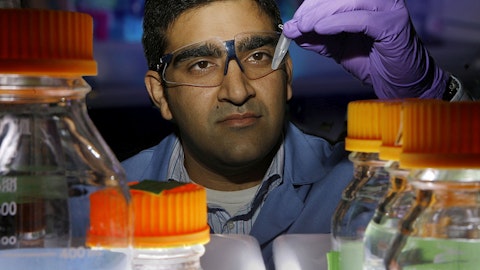In other words, since the two drugs in this combination are fixed, it would not apply to the tail ends of the patient curve. That is, those early stage diabetics who only require low doses, and those late stage diabetics who require higher doses of one of the components than the combination can supply due to fixed ratios.
Novo understood this would be an issue beforehand, and so they tailored 5 different Phase III trials for different populations in order to test each separately and prove that the combination works for each population. The proposed populations are:
1. Patients on neither GLP-1 nor insulin but who have failed other antidiabetic therapies like metformin
2. Patients with inadequate glycemic control on GLP-1 alone
3. Patients with inadequate glycemic control on insulin alone
The official further noted that individual titration (dosing) of each drug in the combination is not possible, and so it cannot apply in a blanket sense to the entire diabetes population. The official emphasized in outlining discussion points that combining a drug like insulin, with no theoretical maximum titration limit, with a GLP-1 drug like liraglutide with a very narrow dosing range, would present some disadvantages in terms of dosing flexibility. As we’ll see later on, Novo Nordisk was able to overcome these concerns with its data.
Novo Nordisk A/S (ADR) (NYSE:NVO)’s Presentation
The company began its presentation with the fact that the American Diabetes Association (ADA) recommends an HbA1C goal of below 7%. Between 60% and 80% of patients in two pivotal Phase III trials indeed achieved this goal. This is actually quite remarkable, because in the real world, Novo noted that only half of patients on GLP-1 drugs reach this goal, and only 30% of patients on insulin achieve it. The reduction lasted for up to 52 weeks, so this is long term benefit. The company then clarified that the combination drug is for treatment intensification only, and not for initial therapy.
Dr. Christopher Sorli, the principle trial investigator for these trials but not employed by Novo Nordisk, then made a key comment as follows, which also has broad implications for other companies in the diabetes space:
…long-term studies of intensive glucose control suggest that getting patients to goal early can have long-term benefits in reducing cardiovascular disease and mortality while other studies in patients with increased risk of cardiovascular disease suggest that intensive control may negatively impact mortality.
This comment is once again relevant for other companies in the space as it gives both Novo Nordisk and Oramed ammunition for the approval of the oral insulin pills they are both developing, just a factoid to keep in mind here. Meaning, even if any potential oral therapy is not as effective in controlling glucose as subcutaneous injections are, if it will encourage early stage patients to get on insulin earlier, there is more reason for these therapies to be approved.
Continuing on, the investigator notes that getting patients to take both therapies separately and concurrently would require more injections, which translates to less adherence and compliance. This may seem like it has nothing to do with either company because it is not their responsibility to get patients to comply, but as we will see in the reasoning for each vote, compliance has a lot to do with FDA approval.
Here we get to something seemingly inconsequential, but which was actually a pivotal factor in the delay of Sanofi’s IGlarLixi that was not suffered by IDegLira. That is, the titration algorithm, or how the patient calibrated his or her dose. The algorithm is very simple for IDegLira. The patient begins with a low dose, and increases by 2 units if blood sugar is above target, and decreases by 2 if below target. That’s it. (Keep this in mind.)
The results of one of the trials was a 1.44% decrease in A1C for insulin degludec alone, and a decrease of 1.28% for liraglutide alone. The combination saw a decrease of 1.91%, and was also associated with lower rates of hypoglycemia, or blood sugar levels that were too low. In general, it just gave better control. The mean A1C level attained after 26 weeks was 6.4%, which conforms to ADA targets mentioned above. More importantly, and what made IDegLira particularly impressive in the eyes of the panel, was that in order to achieve these levels, the IDegLira dose remained stable after week 12, but the insulin dose continued to increase from baseline. Meaning, the combination enabled patients to take lower insulin doses than otherwise with the same glycemic control.





